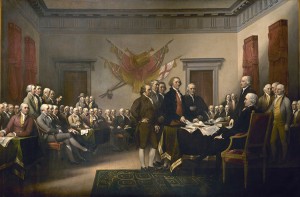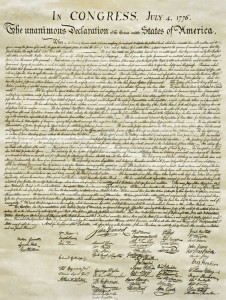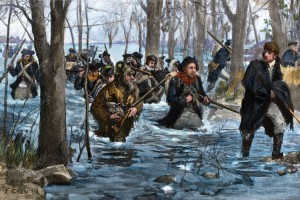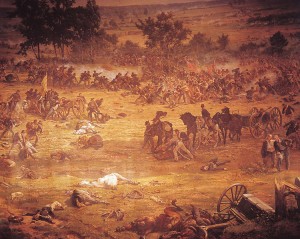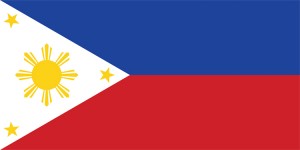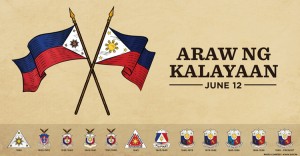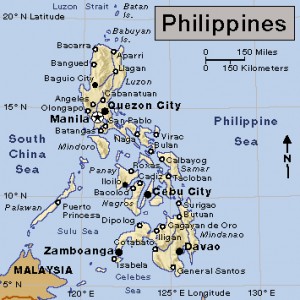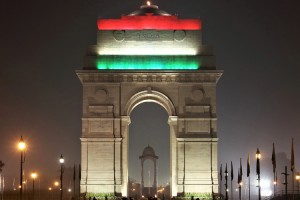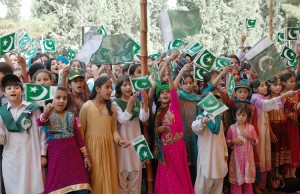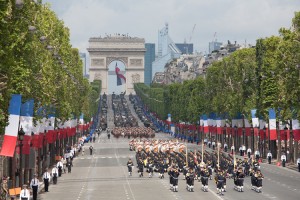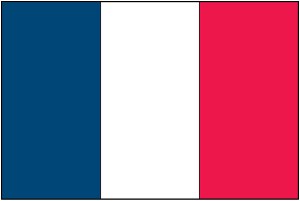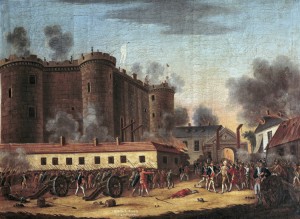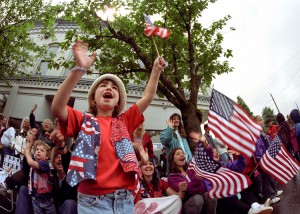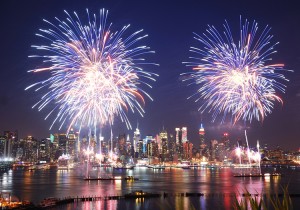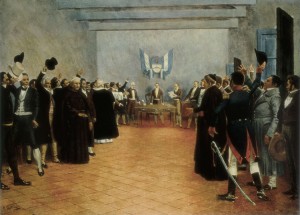¡Viva México! The Cry of Dolores
Monday, September 16th, 2019September 16, 2019
Last night, on September 15, Mexican President Andrés Manuel López Obrador opened Independence Day celebrations by ringing a special bell on the balcony of the National Palace in Mexico City and giving the rallying call of the Grito de Dolores (Cry of Dolores). The president’s grito included: “¡Viva México! ¡Viva la independencia! ¡Vivan los héroes!” (Long live Mexico! Long live independence! Long live the heroes!) The cry was first given in 1810 by the Mexican priest and revolutionary Miguel Hidalgo y Costilla, who rang the same bell to gather an audience before calling for rebellion against Spanish rule, triggering the Mexican War of Independence (1810-1821). The date of Hidalgo’s cry, September 16, is celebrated as Independence Day (Día de la Independencia) in Mexico.
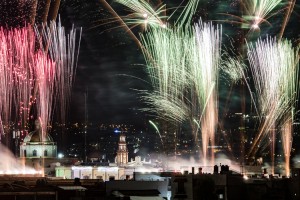
Fireworks illuminate Mexico city on September 16, Independence Day in Mexico. Credit: © David Arciga, Shutterstock
In 1807, during the Napoleonic Wars in Europe, French forces occupied Spain and spread confusion among Spain’s American colonies. Many people in Mexico—such as Father Hidalgo—saw this as an opportunity to achieve independence from Spain, a nation that had ruled Mexico (the heart of New Spain) since the early 1500′s. After years of growing unrest, the people of the town of Dolores (now Dolores Hidalgo in Guanajuato) were called to the local church by Hidalgo’s bell in the early hours of Sept. 16, 1810. Hidalgo then gave the Cry of Dolores and began the rebellion against Spanish rule.
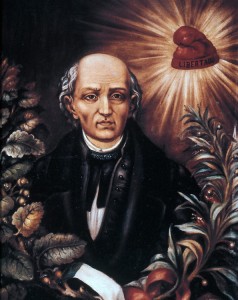
Miguel Hidalgo y Costilla, who first gave the Cry of Dolores in 1810, is known as “The Father of Mexican Independence.” Credit: Granger Collection
Hidalgo’s untrained followers armed themselves and attacked Spanish officials and those who supported the Spaniards. At first, Hidalgo gained support for his cause. But Hidalgo was eventually forced to retreat, and Spanish troops captured and executed him in 1811. José María Morelos y Pavón, another priest, continued Hidalgo’s struggle. In 1813, Morelos held a Congress that issued the first formal call for independence. The Congress wrote a constitution for a Mexican republic. Unlike Hidalgo, Morelos used ambush tactics against small, isolated Spanish military units. His campaign was more successful than Hidalgo’s, but in 1815 he too was captured and executed.
By 1816, Spanish troops had captured or killed many of the rebels, but small guerrilla groups continued to operate in the countryside. In an effort to recover from the cost of the Napoleonic Wars, Spain’s King Ferdinand VII heavily taxed the people of Mexico. The king also organized a large army to put down the remaining revolutionary elements. However, only a small portion of the Spanish forces in Mexico remained loyal to Spain, and the army eventually joined forces with the rebels. Spanish officials withdrew from Mexico, and the nation became independent on Sept. 28, 1821.

